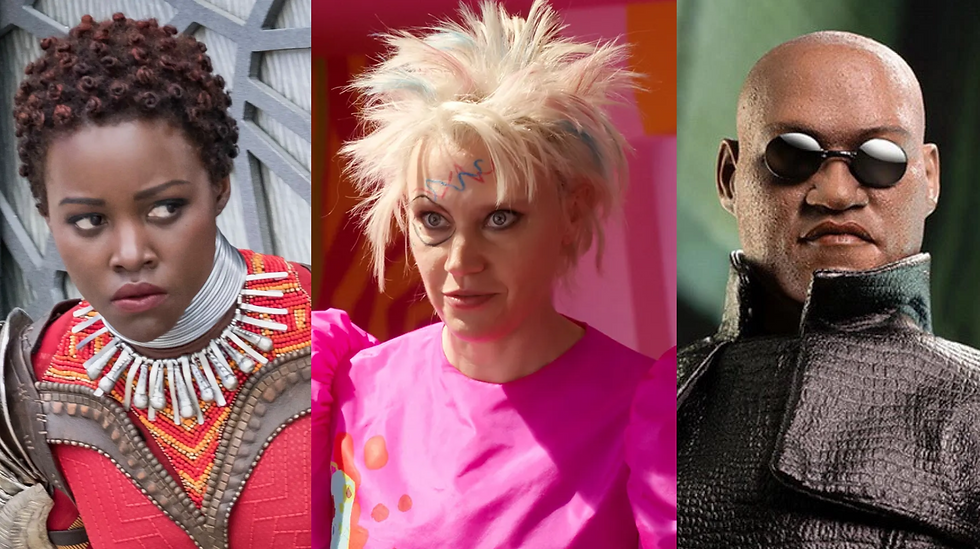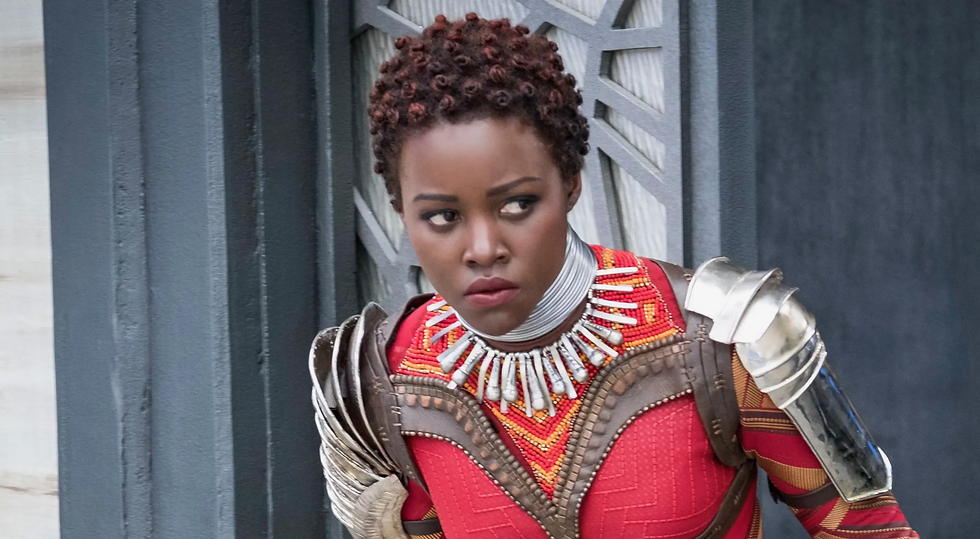Why Designers Must Lead the Moral Blueprint of AI
- Rabia Malik

- Aug 5
- 4 min read
(By Rabia Malik)
If AI were The Matrix, everyone would have a role to play.
Engineers would be the architects, tirelessly coding the system into existence. Lawyers and regulators? They’d be the Agents, patrolling the rules, making sure nothing breaks the system’s order. CEOs and investors would be the ones funding the survival of Zion, shaping the strategy from high above.
And designers? We’re Morpheus.
We’re the ones sliding the red pill across the table. We’re the ones guiding Neo, who’s the user, through a reality they didn’t create but must navigate. We don’t just point at the code and say “Good luck.” We translate it into an experience humans can understand, trust, and survive.
And in AI, that experience is inseparable from ethics. Every single interaction, whether it’s a chatbot, a fraud detection system, or an AI copilot, carries moral weight.


Barbie: Weird Barbie Energy in AI
Or think about Barbie (yup, the 2023 one).
Engineers build the Dreamhouse. Lawyers and regulators sit in the Mattel boardroom. CEOs run the empire from headquarters.
Designers? We’re Weird Barbie, the one who’s seen the cracks in the system, who knows how reality and Barbie Land collide, and who can guide everyone toward a world that works for all Barbies and Kens.
Designers are the ones who ask the uncomfortable questions and insist on inclusivity, even when the system is built for perfection.

Black Panther: Nakia’s Diplomacy
In Black Panther, engineers are Shuri, building Wakanda’s most advanced technology. Lawyers and council leaders ensure that tradition and law remain intact. CEOs and investors? That’s T’Challa, strategically resourcing and leading the kingdom forward.
But designers? We’re Nakia, the strategist and humanitarian who understands how technology interacts with the real world.
Designers make sure the incredible innovations of Wakanda are applied with care, balance, and a focus on protecting all communities.
Star Wars: The Jedi of UX
In Star Wars, engineers are the droid builders and starship engineers, crafting incredible machinery. Lawyers and regulators are the Galactic Senate, drafting laws to govern the galaxy. CEOs and investors are the Rebel Alliance leaders, resourcing missions and mobilizing fleets.
But designers? We’re the Jedi, Yoda, Obi-Wan, Rey, sensing the Force of the user experience, balancing it so the Dark Side (harmful AI behaviors) doesn’t take over.
Designers protect the balance. We make sure the technology serves the people, not just its creators.
Everyday Tech: Where Ethics Really Lives
This isn’t just a movie pattern; it’s everywhere in tech.
Take Duolingo. The engineers can build the streak system. Executives can push for growth. But it’s designers who decide how Duo the Owl talks to you, whether it feels motivating, supportive, or like you’re being stalked by a green bird with boundary issues.
Look at Instagram. Engineers can create the feed algorithm. But it’s designers who decide how it feels to use the platform, what gets surfaced, how sensitive moments are handled, and how safety is integrated into the experience.
Even in Animal Crossing, engineers build the island mechanics. The business side funds expansions. But designers? We’re Isabelle setting the tone, making the space feel welcoming and safe for everyone who visits.
Ethics Lives in the Micro-Decisions
Ethics in AI isn’t just about banning bad prompts or blocking dangerous outputs. It’s embedded in the everyday micro-decisions. Think about how a bot comforts someone after pregnancy loss. The tone, timing, and empathy aren’t just UX; they’re moral choices. Or consider how a fraud detection flag determines who gets escalated, dismissed, or gets a second chance. Those decisions live in the interface, defaults, and language. Even a workflow copilot’s order of suggested actions isn’t neutral. It’s a value judgment baked into the logic. These aren’t compliance rules. They’re design rules. And they quietly write the moral blueprint that AI lives by.
What a Moral Blueprint Looks Like
A moral blueprint isn’t a style guide. It isn’t a compliance checklist. It’s a living framework that defines what AI should do by default, what it should never do, how it navigates gray areas, and how it respects context, consent, and care. And it’s not something we tack on at the end. It grows alongside specs, wireframes, and prototypes.
Designers are uniquely positioned to lead this work not because we’re “better” than engineers, lawyers, or CEOs, but because our craft is built on understanding the human side of technology. We’ve seen the edge cases. We’ve designed for real lives, not just optimized for clicks.
The Call to Designers
The moral blueprint for AI will be written explicitly or implicitly by the people building it.
If designers aren’t in the room, the blueprint will still exist. But will it protect the humans AI serves? Will it guide the AI itself, helping it grow and adapt with the right moral compass?
You wouldn’t wait until a child is grown to teach them values. You build those morals in as they grow.
AI is no different.
As AI becomes an integral part of daily life, our responsibility as designers is to ensure that ethics isn’t an afterthought; it’s the foundation. This isn’t about perfection. It’s about protection, trust, and designing systems that grow with the right moral compass from the start.
💭 Now, I want to hear from you.
If Barbie, The Matrix, Star Wars, and Black Panther all have “designers” hidden in their stories, who else comes to mind?
🎬 Is there a movie or show you think secretly showcases a “designer” shaping the rules?
🌎 And in the real world, who do you think is the Morpheus, Weird Barbie, Nakia, or Jedi of AI ethics today?
Drop your thoughts, I’d love to keep this conversation going.

Comments